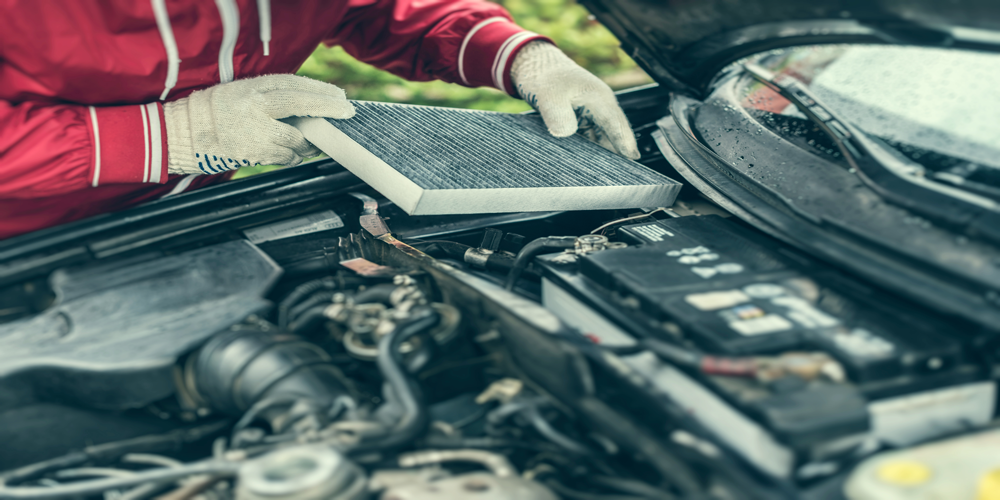The Green Choice: Recycling Your Old Vehicle
In a world where sustainability is becoming increasingly paramount, every decision we make regarding our possessions has broader implications. One such decision that often goes overlooked is what to do with an old vehicle when it reaches the end of its life. While the conventional route might involve selling it for scrap or abandoning it in a vehicle scrap yard, there’s a greener alternative: recycling.
Vehicle recycling is a process that involves dismantling an end-of-life vehicle (ELV) for spare parts and materials. This practice not only reduces the environmental impact of automotive waste but also presents numerous economic and ecological benefits. In this article, we’ll delve into the intricacies of vehicle recycling, explore its environmental significance, and discuss why it’s the green choice for disposing of old vehicles.
The Environmental Impact of Automotive Waste
Before delving into the benefits of vehicle recycling, it’s essential to understand the environmental repercussions of not properly disposing of old vehicles. The automotive industry is a significant contributor to pollution and resource depletion. When vehicles reach the end of their lifespan, they pose a considerable environmental threat if not disposed of responsibly.
Traditional methods of vehicle disposal, such as abandonment or landfilling, lead to several environmental issues. These include soil and water contamination due to leaked fluids, air pollution from burning materials, and the wastage of valuable resources like metals and plastics. Furthermore, the sheer volume of discarded vehicles exacerbates the strain on already limited landfill space.
The Process of Vehicle Recycling
Vehicle recycling offers a sustainable solution to mitigate the environmental impact of automotive waste. The process typically involves several stages:
- Depollution: Before any dismantling occurs, the vehicle undergoes depollution to remove hazardous materials such as gasoline, oil, coolant, and mercury switches. These substances are carefully collected and disposed of according to environmental regulations to prevent contamination.
- Dismantling: Once depollution is complete, the vehicle is dismantled by trained professionals. Usable parts, such as engines, transmissions, and electronics, are extracted for resale or reuse. These components are tested and refurbished if necessary, extending their lifespan and reducing the demand for new replacements.
- Material Recovery: After salvaging reusable parts, the remaining shell of the vehicle is crushed and shredded. This process separates ferrous metals (such as steel and iron) from non-ferrous metals (like aluminum and copper) using magnets and other separation techniques. Plastics, glass, and rubber are also recovered for recycling or energy recovery.
- End-of-Life Vehicle Certificate: Finally, a certificate of destruction is issued, confirming that the vehicle has been properly disposed of in compliance with environmental regulations. This document is crucial for deregistering the vehicle and absolving the owner of any future liabilities.
Environmental Benefits of Vehicle Recycling
Vehicle recycling offers a multitude of environmental benefits that contribute to a cleaner, more sustainable future:
- Conservation of Resources: Recycling vehicles reduces the demand for raw materials, conserving energy and natural resources. Metals recovered from scrapped vehicles can be melted down and used to manufacture new products, reducing the need for mining and refining processes.
- Reduction of Landfill Waste: By diverting end-of-life vehicles from landfills, recycling helps alleviate the strain on waste management infrastructure and reduces the risk of soil and water contamination. This, in turn, contributes to the preservation of ecosystems and biodiversity.
- Energy Savings: Recycling metals requires significantly less energy than producing them from virgin ore. For example, recycling steel saves up to 60% of the energy required compared to manufacturing it from scratch. By lowering energy consumption, vehicle recycling helps mitigate greenhouse gas emissions and combat climate change.
- Prevention of Pollution: Proper disposal of hazardous materials during the recycling process prevents the release of pollutants into the environment. By safely managing fluids like motor oil and coolant, recycling facilities minimize the risk of soil and water pollution, safeguarding public health and ecosystems.
Economic Incentives for Vehicle Recycling
In addition to its environmental benefits, vehicle recycling presents compelling economic incentives:
- Revenue Generation: Recycling old vehicles can be a lucrative business. Salvage yards and recycling facilities purchase end-of-life vehicles from owners, offering them a financial incentive to recycle rather than abandon their old cars. Moreover, the resale of salvaged parts and materials contributes to the profitability of the recycling industry.
- Job Creation: The vehicle recycling industry provides employment opportunities for a diverse workforce, including mechanics, dismantlers, technicians, and administrative staff. By fostering job growth and economic stability, recycling facilities contribute to local communities and economies.
- Cost Savings for Manufacturers: Recycled materials, such as steel and aluminum, are often cheaper than their virgin counterparts. By incorporating recycled metals into their production processes, automakers can reduce manufacturing costs and improve profitability. This cost-saving measure incentivizes the use of recycled materials, further promoting sustainability in the automotive industry.
The Role of Legislation and Regulation
Government regulations play a crucial role in promoting vehicle recycling and ensuring compliance with environmental standards. Many countries have implemented legislation mandating the proper disposal of end-of-life vehicles and the recycling of their components. These regulations may include requirements for depollution, dismantling, and material recovery, as well as the issuance of certificates of destruction.
Furthermore, governments may offer incentives or subsidies to encourage vehicle owners to recycle their old cars responsibly. These incentives can take the form of tax credits, rebates, or vouchers for scrapping old vehicles and purchasing newer, more fuel-efficient models. By incentivizing sustainable behavior, policymakers can accelerate the transition towards a circular economy in the automotive sector.
Consumer Awareness and Education
Despite the numerous benefits of vehicle recycling, many consumers remain unaware of its importance and the options available for disposing of their old vehicles responsibly. As such, raising awareness and providing education on the environmental and economic benefits of recycling is crucial.
Manufacturers, policymakers, and environmental organizations can collaborate to educate consumers about the benefits of recycling, dispel myths surrounding the process, and provide guidance on how to recycle their old vehicles effectively. This may include creating informational campaigns, hosting workshops, and providing resources on sustainable transportation options.
Choosing the Green Path
Vehicle recycling offers a sustainable solution to the environmental and economic challenges posed by automotive waste. By recycling old vehicles, we can conserve resources, reduce pollution, and create economic opportunities while promoting a cleaner, more sustainable future for generations to come.
As consumers, policymakers, and industry stakeholders, we all have a role to play in advancing vehicle recycling initiatives and promoting sustainable transportation practices. By choosing the green path and recycling our old vehicles, we can make a meaningful contribution to environmental preservation and create a more sustainable world for future generations.






